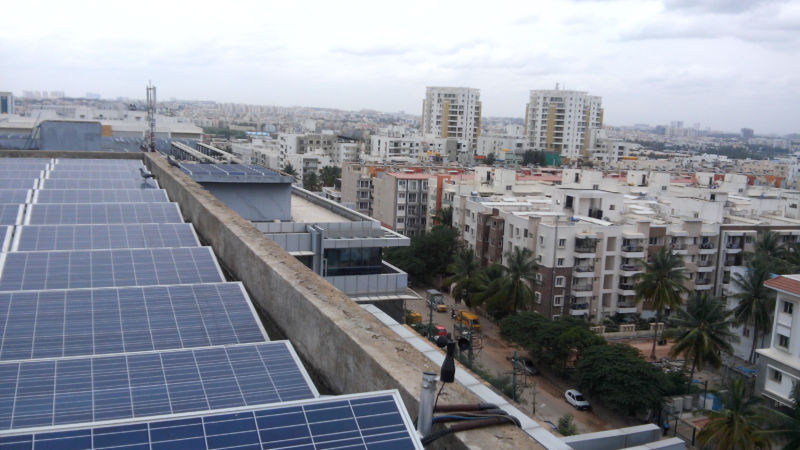India will increase the production of "green" energy by 100 GW by 2022

In many countries, wind and solar energy is becoming increasingly popular. The reason is simple - because in a large number of countries insolation is extremely high, almost constantly blowing winds are also not uncommon. Do not use such a gift - just a crime. Indeed, alternative countries use many countries. India is no exception. Now the government has announced its intention to carry out an extensive modernization of its energy facilities.
Country leaders announcedabout plans to increase energy production using alternative sources by about 100 GW over 4-5 years. Perhaps this can be done by creating the largest "factory of solar electricity." The project will be partly financed by the European Investment Bank, which allocated $ 400 million for the development of solar energy in this country.
Indian Prime Minister Narendra Modi said earlier that by the end of 2022, the country will produce 175 GW using alternative energy sources. India currently generates about 57 GW of green energy. “Solar energy is very popular in India. It is relatively inexpensive, and over the next six years we plan to organize its generation throughout the country, ”the government said.
As technology improves and the scale of solar cell production increases, their price gradually falls. This, in turn, suggests a significant drop in the cost of "solar electricity", which allows alternative energy sources to compete with traditional dirty production. One of the positive aspects for India related to the introduction and development of solar power stations is the absence of emissions of harmful substances into the atmosphere.
Along with the increase in the share of "green" energy in the total electricity produced in India, the government is going to reduce the production of "dirty" electricity by about 50 GW by 2027. “The coalition dictatorship in India will end soon. Renewable energy has fallen in price by about half over the past two years, then the price will decline. The lower the price of “green” energy, the less profitable is the work of coal-fired power plants, ”said the director of communications of the Central Energy Department of India (CEEI) in January of this year.
The government of India is now doing everything to bring the moment of the “fall of the coal dictatorship” closer. In particular, already in 2017, the Indians began to actively build and put into operation large solar parks. By 2020, commissioning of parks generating up to 40 GW is expected. This year, India is going to build 50 solar “farms” with a total investment of $ 1.2 billion. One example of such a facility is the Pavada solar park, which was established in the state of Karnataka in south-west India. The total planned capacity of the facility is 2 GW. In March of this year, it earned a part of the park with a capacity of 600 MW. And all this is just the beginning.
Anyway, most experts believe that India can achieve the desired. In addition, work on a national-scale project will favorably affect the economic condition of the country.
By the way, "green energy" is actively engaged not only in India, but also in many other countries where insolation is quite large. This is a series of countries in Europe, Asia, both Americas. Many experts predict the rapid growth of alternative energy and the emergence of new sources of energy in the near future.
In addition to the positive aspects, such a rapid development of solar energy can cause problems. One of them is the "problem of the sun bubble." The fact is that the more solar power plants are built, the cheaper the cost of kW of energy. Well, the lower the price, the less profitable businessmen continue to build.
If the cost of energy falls very much, then the entire economy based on the production and installation of photovoltaic cells may collapse. The fears of experts are not in vain. Thus, Acme Solar won a tender in May of last year for the construction of a solar park in Darzhasthan with the price of electricity of only $ 0.04 kW / h.
Whatever it was, the development of solar energy continues, huge amounts of money are being poured into this industry, governments give subsidies to entrepreneurs, which allows them to build new facilities at high speed.

Recently, the European Solar Energy Association SolarPower Europe published the Global Market Outlook for Solar Power 2018–2022 report . According to the forecast, over the next five years, 621.7 GW of solar capacity will be commissioned in the world, that is, approximately 124.3 GW per year.
